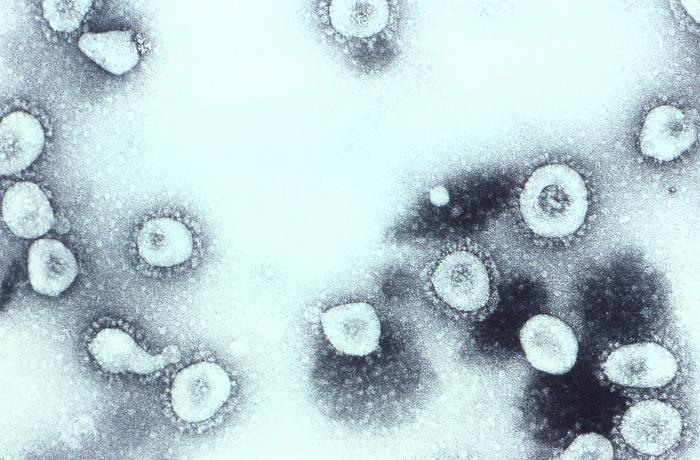|
List Of Coronavirus Live Isolates
This article aims at keeping an up-to-date list of Coronavirus strains and subspecies successfully isolated and cultured in laboratory, a task which is often challenging. When relevant it shall include a few synthetic chimera as well as some strains that were only propagated in laboratory animals. Alphacoronavirus * 229E * NL63 * PEDV (adding Trypsin to Vero cells), propagated in piglets, repeated passage in Vero cells, using Vero/TMPRSS2 and Vero/MSPL cells * SADS Tegacovirus * TGEV PRCV * Feline coronavirus * Canine coronavirus. * A recent recombinant CCoV-HuPn-2018 including a human case Betacoronavirus Merbecovirus * HKU5 SARS-S chimera * HKU5 and a MERS PDF-2180-S chimera, with trypsin * Various MERS HKU4-RBD chimera * HKU4 * MERS Embecovirus * Bovine coronavirus * Rabbit HKU14 * MHV * OC43 (1967) * HKU1 * Parker rat coronavirus * Dromedary camel HKU23 * Canine respiratory coronavirus (CRCoV) * Equine coronavirus Sarbecovirus * SARS * HKU3 SARS-RBD ... [...More Info...] [...Related Items...] OR: [Wikipedia] [Google] [Baidu] |
Coronavirus
Coronaviruses are a group of related RNA viruses that cause diseases in mammals and birds. In humans and birds, they cause respiratory tract infections that can range from mild to lethal. Mild illnesses in humans include some cases of the common cold (which is also caused by other viruses, predominantly rhinoviruses), while more lethal varieties can cause SARS, MERS and COVID-19, which is causing the ongoing pandemic. In cows and pigs they cause diarrhea, while in mice they cause hepatitis and encephalomyelitis. Coronaviruses constitute the subfamily ''Orthocoronavirinae'', in the family '' Coronaviridae'', order ''Nidovirales'' and realm ''Riboviria''. They are enveloped viruses with a positive-sense single-stranded RNA genome and a nucleocapsid of helical symmetry. The genome size of coronaviruses ranges from approximately 26 to 32 kilobases, one of the largest among RNA viruses. They have characteristic club-shaped spikes that project from their surface, which ... [...More Info...] [...Related Items...] OR: [Wikipedia] [Google] [Baidu] |
Animal Virology
Veterinary virology is the study of viruses in non-human animals. It is an important branch of veterinary medicine. Rhabdoviruses Rhabdoviruses are a diverse family of single stranded, negative sense RNA viruses that infect a wide range of hosts, from plants and insects, to fish and mammals. The ''Rhaboviridae'' family consists of six genera, two of which, cytorhabdoviruses and nucleorhabdoviruses, only infect plants. Novirhabdoviruses infect fish, and vesiculovirus, lyssavirus and ephemerovirus infect mammals, fish and invertebrates. The family includes pathogens such as rabies virus, vesicular stomatitis virus and potato yellow dwarf virus that are of public health, veterinary, and agricultural significance. Foot-and-mouth disease virus Foot-and-mouth disease virus (FMDV) is a member of the Aphthovirus genus in the Picornaviridae family and is the cause of foot-and-mouth disease in pigs, cattle, sheep and goats. It is a non-enveloped, positive strand, RNA virus. FMDV ... [...More Info...] [...Related Items...] OR: [Wikipedia] [Google] [Baidu] |

